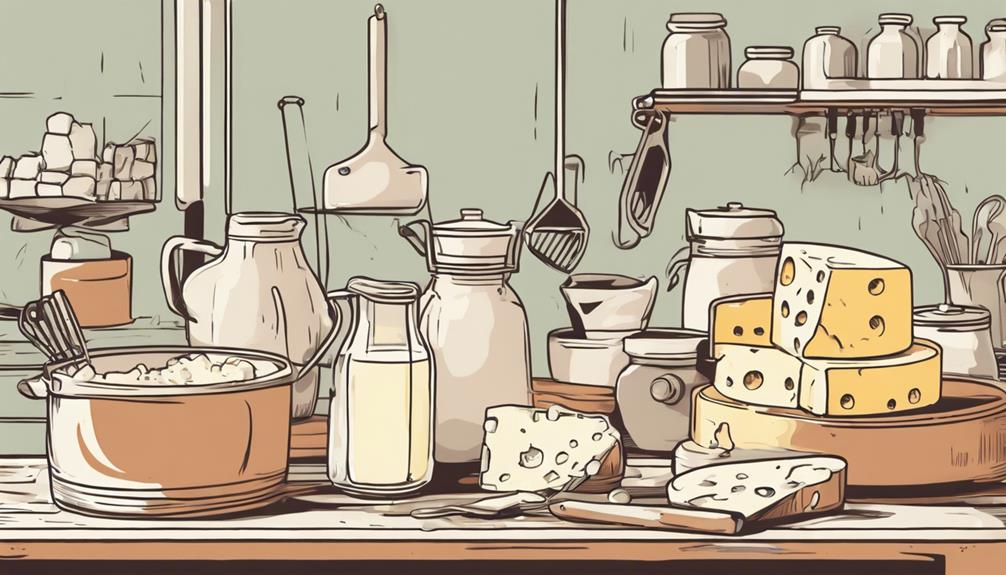See All: Cheese Making
Watch How To Do This Here…
YES! You can make cheese at home. Take our FREE 4-Part video training series to simplify cheesemaking for everyone. No waste. No overwhelm. No missing steps. You can make delicious, healthy cheese, even if you only have access to grocery store milk and regular kitchen equipment…
Click Here To Watch Step By Step Now
“I’ve recently started a small cheese-making business in Leicestershire, UK, and I’ve heard a lot about the different results you can get from using raw milk versus pasteurized milk. Could you explain how they differ in the cheese-making process, and what factors I need to consider when choosing between them?” thanks, Jonathan, Leicestershire, UK.
How Does Raw Milk Differ From Pasteurized Milk in Cheese Making?
Hey Jonathan, great question! When it comes to cheese making, the type of milk you use can significantly impact both the flavor and texture of your final product. Let’s break down the differences between raw and pasteurized milk, and explore how each affects the cheese-making process.
What Is Raw Milk?
Raw milk is milk that has not been pasteurized. This means it hasn’t been heat-treated to kill off bacteria and pathogens. Raw milk retains its natural enzymes, good bacteria, and several beneficial nutrients that can be lost during pasteurization.
What Is Pasteurized Milk?
Pasteurized milk, on the other hand, has undergone a heat treatment process to eliminate harmful bacteria like E. coli, Listeria, and Salmonella. This process generally involves heating the milk to a specific temperature (usually 161°F or 72°C) for a certain period of time. Although pasteurization makes the milk safer for consumption, it also alters some of its natural properties.
Flavor Profiles: Raw vs. Pasteurized Milk
Raw Milk
- Complex Flavor: Because raw milk contains natural enzymes and bacterial cultures, it tends to produce cheese with more complex, nuanced flavors.
- Regional Terroir: The flavor of raw milk cheese can vary depending on the region and local flora, offering a unique taste that reflects its place of origin.
Pasteurized Milk
- Consistency: Pasteurization creates a more uniform and consistent product, which is great for large-scale production.
- Milder Flavor: The heat treatment process kills not only harmful bacteria but also some of the beneficial ones, leading to a milder taste compared to raw milk cheese.
Texture Variations: Raw vs. Pasteurized Milk
Raw Milk
- Diverse Textures: Enzymes and bacteria in raw milk contribute to a varying texture that can be creamy, crumbly, or firm depending on the type of cheese.
- Natural Cohesion: Raw milk contains more natural minerals, which can lead to a better curd structure and cohesion in the cheese.
Pasteurized Milk
- Uniformity: The uniform nature of pasteurized milk produces a more predictable texture across different batches.
- Firmness: Due to the loss of certain enzymes, pasteurized milk often results in slightly firmer cheese.
Health Considerations
When considering health, it’s important to weigh both benefits and risks, especially since you’re making cheese for others.
Raw Milk
- Rich in Nutrients: Raw milk is packed with beneficial bacteria, vitamins, and enzymes which provide added health benefits.
- Health Risks: There’s a higher risk of contamination with harmful bacteria, which can lead to foodborne illnesses. It’s critical to source raw milk from reputable farms that maintain high hygiene standards.
Pasteurized Milk
- Safety: Pasteurization kills harmful bacteria, making it generally safer for public consumption.
- Nutrient Loss: While pasteurization reduces risk, it also decreases some beneficial components, potentially impacting the overall health benefits.
Cheese Varieties: What Works Best?
Certain types of cheeses respond better to raw milk, while others are traditionally made with pasteurized milk. Jonathan, here’s a quick rundown:
Raw Milk Cheeses
- Artisan Cheeses: Types like Brie, Camembert, and Roquefort are well-known for being made with raw milk.
- Farmstead Cheeses: Small-scale, farmstead cheeses often utilize raw milk for its unique flavors and textures.
Pasteurized Milk Cheeses
- Retail Cheeses: Widely distributed cheeses like Cheddar, Gouda, and Mozzarella are often made from pasteurized milk for safety and consistency.
- Mass Production: Large-scale operations typically use pasteurized milk due to its predictable nature and safety profile.
Legal Regulations
In many countries, including the UK, regulations govern the use of raw milk in cheese production. Jonathan, you might need to look into these rules:
UK Regulations
- Cheese Ageing: Raw milk cheeses must be aged for at least 60 days to reduce the risk of harmful bacteria.
- Farm Certification: Farms supplying raw milk must comply with strict hygiene and safety standards.
Practical Considerations
Making cheese with raw vs. pasteurized milk isn’t just about flavor and texture. Consider these factors:
Raw Milk
- Milk Quality: Freshness and cleanliness are paramount. The milk should be sourced from healthy, well-managed herds.
- Storage: Raw milk should be used quickly to prevent spoilage.
Pasteurized Milk
- Consistency: Reduced variability in batches means easier troubleshooting and consistent results.
- Supply Chain: Easier to work with large suppliers who can provide bulk quantities.
Final Thoughts…
Jonathan, I hope this detailed overview sheds some light on how raw milk differs from pasteurized milk in cheese making. Whether you opt for raw milk’s complex flavors or pasteurized milk’s safety and consistency, both have their unique merits. Thanks for reaching out, and best of luck with your cheese-making venture in Leicestershire! If you have any more questions, feel free to ask.
Return To: Cheese Making
Free Step By Step Cheese Making Videos…
YES! You can make cheese at home. Take our FREE 4-Part video training series to simplify cheesemaking for everyone. No waste. No overwhelm. No missing steps. You can make delicious, healthy cheese, even if you only have access to grocery store milk and regular kitchen equipment…

